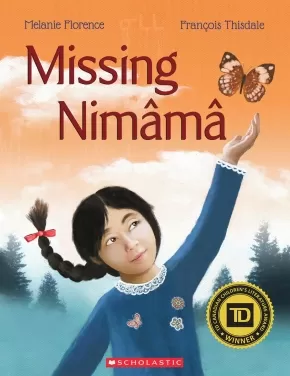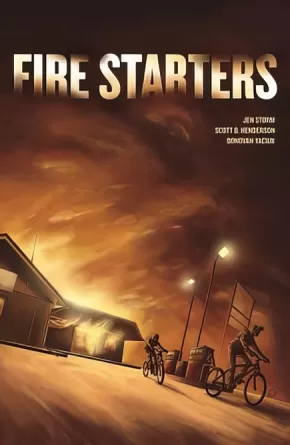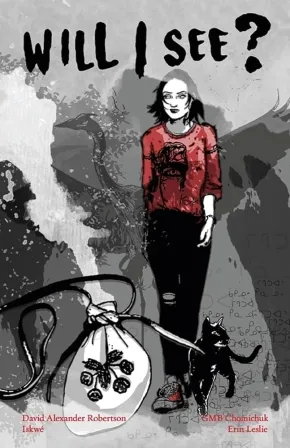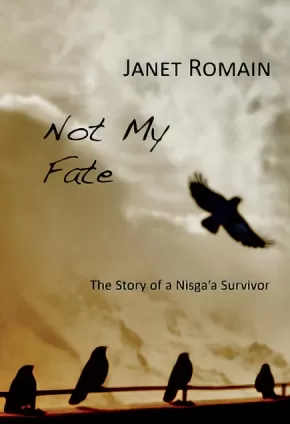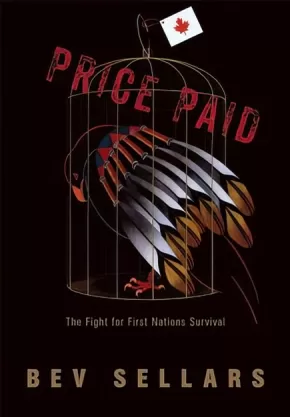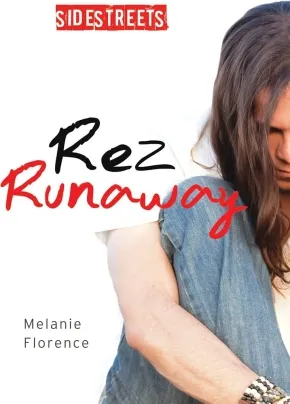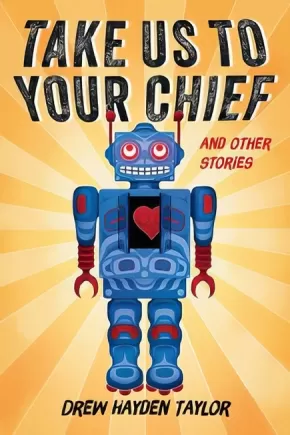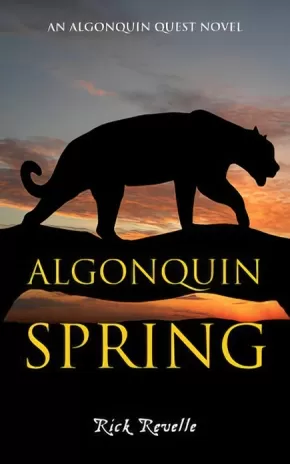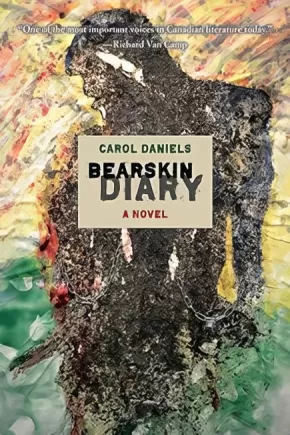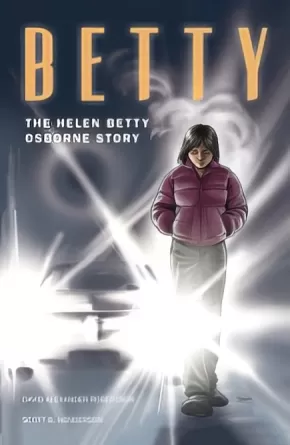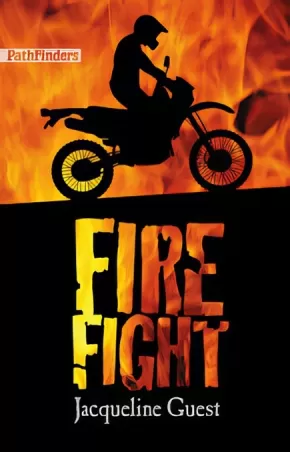2017 - 2018 Selections
Synopsis:
A deeply scouring poetic account of the residential school experience, and a deeply important indictment of colonialism in Canada.
Many of the poems in Louise Halfe's Burning in This Midnight Dream were written in response to the grim tide of emotions, memories, dreams and nightmares that arose in her as the Truth and Reconciliation process unfolded. In heart-wrenching detail, Halfe recalls the damage done to her parents, her family, herself. With fearlessly wrought verse, Halfe describes how the experience of the residential schools continues to haunt those who survive, and how the effects pass like a virus from one generation to the next. She asks us to consider the damage done to children taken from their families, to families mourning their children; damage done to entire communities and to ancient cultures.
Halfe's poetic voice soars in this incredibly moving collection as she digs deep to discover the root of her pain. Her images, created from the natural world, reveal the spiritual strength of her culture.
Originally published in 2016 by Coteau Books, Burning in This Midnight Dream won the Indigenous Peoples' Publishing award, the Rasmussen, Ramussen & Charowsky Indigenous Peoples' Writing award, the Saskatchewan Arts Board Poetry Award, the League of Canadian Poets' Raymond Souster Award, and the High Plains Book Award for Indigenous Writers. It was also the 2017 WILLA Literacy Award Finalist in Poetry. This new edition includes a new Afterword by Halfe.
Reviews
"Burning in this Midnight Dream honours the witness of a singular experience, Halfe's experience, that many others of kin and clan experienced. Halfe descends into personal and cultural darkness with the care of a master storyteller and gives story voice to mourning. By giving voice to shame, confusion, injustice Halfe begins to reclaim a history. It is the start of a larger dialogue than what is contained in the pages." --Raymond Souster Award jury citation
Additional Information
104 pages | 5.75" x 8.50" | 8 illustrations
Synopsis:
A beautiful, transcendent story of a mother-daughter connection that persists through tragedy and across time.
Kateri is a young Cree girl, growing up in the care of her grandmother. We see her reaching important milestones: her first day of school, first dance, first date, wedding, first child. Her mother is absent, but not gone, watching her child growing up without her.
Told in alternating voices of child and mother, Missing Nimâmâ is a story of love, loss, and acceptance, showing the human side of a national tragedy. Dreamlike illustrations by François Thisdale enrich Kateri’s emotional journey. An afterword by the author provides a simple, age-appropriate context for young readers. Includes Cree words and glossary.
Reviews
"A free-verse intergenerational story of separation, loss, and daughter-mother connection amid the ongoing crisis of missing First Nations girls and women. . . On each page, Cree author Florence presents two narratives: Kateri's and her missing nimâmâ's. By juxtaposing the daughter's and mother's thoughts and feelings in complementary verse, Florence provides them the opportunity to experience life together from their respective points of view and to talk to each other from a distance. Thisdale's soft-edged, wistful artwork enriches the heartfelt story, strongly capturing the passage of time and Kateri's emotional journey. An afterword is appended, offering simple and relevant information as well as statistics of missing and murdered indigenous girls and women; together with the story, it should help to begin a conversation with young readers. A solid debut picture book that works as a record of voices that are usually unheard, ignored, and forgotten." — Kirkus Reviews
"A touching story related from the point of view of a missing indigenous woman as she watches her daughter grow up without her."— Quill and Quire
Awards
- TD Canadian Children's Literature Award Winner
Educator Information
This is a picture book best suited for more mature readers, as it deals with mature themes and subject matter. It's best used for a read-aloud due to its subject matter and theme of loss. This book is not recommended as an independent read for younger ages.
Additional Information
32 pages | 8.50" x 11.00"
Synopsis:
Looking for a little mischief after finding an old flare gun, Ron and Ben suddenly find themselves in trouble when the local gas bar on Agamiing Reserve goes up in flames, and they are wrongly accused of arson by the sheriff’s son. As the investigation goes forward, community attitudes are revealed, and the truth slowly comes to light.
Reviews
"Storm's story is a very thoughtful look at the two systems of justice. The Native boys in the White system, being interrogated is a stark contrast to what the White boy experiences in the Native system of justice. It points to the path Storm is looking for: how a community can heal, rather than how it could punish and inflict more harm on people... I recommend Jen Storm's Fire Starters. There's a lot to study, think about, and of course, talk about." -- Debbie Reese, American Indians in Children's Literature
"Fire Starters reminds readers of the many perspectives involved in reconciliation. The story moves beyond Ron and Ben’s experiences as aboriginal teens poorly treated by a white community to include the experiences of law enforcement officers, family members, and even the arsonists themselves. Complementing the fast-paced plot, Henderson’s artwork is drawn from a wide variety of perspectives, and Yaciuk’s moody colours suit the rising tension experienced by all characters. A cautionary tale about the consequences of prejudice and racism, Fire Starters is a valuable addition to conversations about the importance of reconciliation and the power of the truth." -- Roseanne Gauthier, National Reading Campaign
Educator & Series Information
Recommended Grades: 6-9
Fire Starters is one book in The Debwe Series. This series features exceptional Indigenous writing from across Canada.
Synopsis:
May, a young teenage girl, traverses the city streets, finding keepsakes in different places along her journey. When May and her kookum make these keepsakes into a necklace, it opens a world of danger and fantasy. While May fights against a terrible reality, she learns that there is strength in the spirit of those that have passed. But will that strength be able to save her? A story of tragedy and beauty, Will I See illuminates the issue of missing and murdered Indigenous women.
Additional Information
54 pages | 6.50" x 10.00"
Synopsis:
Delgamuukw. Sixties Scoop. Bill C-31. Blood quantum. Appropriation. Two-Spirit. Tsilhqot’in. Status. TRC. RCAP. FNPOA. Pass and permit. Numbered Treaties. Terra nullius. The Great Peace…
Are you familiar with the terms listed above? In Indigenous Writes, Chelsea Vowel, legal scholar, teacher, and intellectual, opens an important dialogue about these (and more) concepts and the wider social beliefs associated with the relationship between Indigenous peoples and Canada. In 31 essays, Chelsea explores the Indigenous experience from the time of contact to the present, through five categories – Terminology of Relationships; Culture and Identity; Myth-Busting; State Violence; and Land, Learning, Law, and Treaties. She answers the questions that many people have on these topics to spark further conversations at home, in the classroom, and in the larger community.
Reviews
"Chelsea attacks issues head on, with humour and wit, sarcasm and cynicism and clear, concise and well-organized information. She makes further research easy, as every chapter includes copious endnotes with links to her curated resources. She explains the terminology of identity — status, non-status, registered, membership, Métis, Inuit, cultural appropriation and two-spiritedness." —Nancy Adams-Kramp
"While subtitled A Guide to First Nations, Métis and Inuit Issues in Canada, it would be a mistake to see Indigenous Writes as a book primarily about Indigenous people. Instead, it is much more about all of us — our relationship as non-Indigenous and Indigenous Canadians, and how it has been shaped (and misshaped) by the historic and contemporary governance of these issues.
For any Canadian who wishes to have an informed opinion about the country that we share — or, more to the point, publicly share that opinion — Indigenous Writes is essential reading."—Michael Dudley
Educator & Series Information
This book is part of the Debwe Series.
For all teachers.
Approved for Manitoba classrooms.
ERAC approved.
Additional Information
291 pages | 7.00" x 9.00"
Synopsis:
Josephine Caplin (Jo) was born into a world marred by maternal abandonment, alcoholism and traumatic epileptic seizures. In grade three, she was apprehended by child services and separated from her protective brother and her early caregivers, her father and uncle, who were kind men with drinking problems. Placed into many alienating and lonely foster homes, Jo would not see her family again until she was fourteen. Throughout her life Jo fought symptoms of fetal alcohol syndrome, abuse by sadistic men and the collective horror of generations of ancestors forced into residential schools, causing many to believe Jo was destined to repeat a hopeless cycle. Yet she did not surrender to others' despairing expectations: against all odds, Jo fought to create her own cycle full of hope and growth.
Born of a Métis-Canadian background, author Janet Romain delicately and proudly tells the story of her heroic friend and explores the tragic aftermath of Canada's residential schools and the effects of colonization. Jo is a courageous woman who determined her own fate and reclaimed her life. NOT MY FATE: STORY OF A NISGA'A SURVIVOR is her struggle to move past a legacy of hardship toward a life of peace and forgiveness.
Synopsis:
Untangles some of the truths and myths about First Nations and addresses misconceptions still widely believed today.
Price Paid: The Fight for First Nations Survival untangles truth from some of the myths about First Nations at the same time that it addresses misconceptions still widely believed today.
The second book by award-winning author Bev Sellars, Price Paid is based on a popular presentation Sellars created for treaty-makers, politicians, policymakers, and educators when she discovered they did not know the historic reasons they were at the table negotiating First Nations rights.
The book begins with glimpses of foods, medicines, and cultural practices North America's indigenous peoples have contributed for worldwide benefit. It documents the dark period of regulation by racist laws during the twentieth century, and then discusses new emergence in the twenty-first century into a re-establishment of Indigenous land and resource rights. The result is a candidly told personal take on the history of a culture's fight for their rights and survival. It is Canadian history told from a First Nations point of view.
Awards and recognition for Bev Sellars's They Called Me Number One: Secrets and Survival at an Indian Residential School
- 2014 George Ryga Award for Social Awareness in Literature
- 2014 Burt Award for First Nations, Métis, and Inuit Literature (third prize)
- Shortlisted for the 2014 Hubert Evans Non-Fiction Prize (B.C. Book Prizes)
- More than 40 weeks on the B.C. bestsellers list
Synopsis:
Raised on a reserve in northern Ontario, seventeen-year-old Joe Littlechief tries to be like the other guys. But Joe knows he's different -- he's more interested in guys than in any of the girls he knows. One night Joe makes a drunken pass at his best friend Benjy and, by the next morning, everyone on the rez is talking about Joe. His mother, a devout Christian, is horrified, and the kids who are supposed to be his friends make it clear there's no place for him in their circle, or even on the rez. Joe thinks about killing himself, but instead runs away to the city.
Alone and penniless on the streets of Toronto, Joe comes to identify with the Aboriginal idea of having two spirits, or combining both feminine and masculine identities in one person. He also begins to understand more about how his parents have been affected by their own experiences as children in residential schools -- something never discussed on the rez. And he realizes he has to come to terms with his two-spiritedness and find people who accept him for who he is.
This is a novel that reflects the complex realities faced by young LGBTQ and aboriginal youth today.
Educator & Series Information
SideStreets are edgy, fast-paced novels, that combine real-world themes and believable characters to make for short heart-stopping books - sure to engage the most reluctant reader.
Lexile measure: 600L
Additional Information
184 pages | 5.25" x 7.50"
Synopsis:
A forgotten Haudenosaunee social song beams into the cosmos like a homing beacon for interstellar visitors. A computer learns to feel sadness and grief from the history of atrocities committed against First Nations. A young Native man discovers the secret to time travel in ancient petroglyphs. Drawing inspiration from science fiction legends like Arthur C. Clarke, Isaac Asimov and Ray Bradbury, Drew Hayden Taylor frames classic science-fiction tropes in an Aboriginal perspective.
The nine stories in this collection span all traditional topics of science fiction--from peaceful aliens to hostile invaders; from space travel to time travel; from government conspiracies to connections across generations. Yet Taylor's First Nations perspective draws fresh parallels, likening the cultural implications of alien contact to those of the arrival of Europeans in the Americas, or highlighting the impossibility of remaining a "good Native" in such an unnatural situation as a space mission.
Infused with Native stories and variously mysterious, magical and humorous, Take Us to Your Chief is the perfect mesh of nostalgically 1950s-esque science fiction with modern First Nations discourse.
Additional Information
160 pages | 6.00" x 9.00"
Synopsis:
After a girl she knows from school goes missing and is found dead in the Red River, Feather is shocked when the police write it off as a suicide. Then, it's Feather's best friend, Mia, who vanishes — but Mia's mom and abusive stepfather paint Mia as a frequent runaway, so the authorities won't investigate her disappearance either. Everyone knows that Native girls are disappearing and being killed, but no one is connecting the dots.
When Feather's brother Kiowa is arrested under suspicion of Mia's abduction, Feather knows she has to clear his name. What Feather doesn't know is that the young serial killer who has taken Mia has become obsessed with Feather, and her investigation is leading her into terrible danger.
Using as its background the ongoing circumstance of unsolved cases of missing and murdered Aboriginal women, this fictional thriller set in Winnipeg explores one teenager's response to a system that has long denied and misrepresented the problem.
Reviews
"Issues drive the plot (a subplot concerns homophobia aimed at one of Feather's friends) in this very brief contemporary novel, making for an informative, swift read." — Kirkus Reviews
"Many teens will be surprised to learn the statistics concerning violence against Aboriginal women in Canada that are quoted by Feather and her mother are true, as are the concerns about inadequate police investigation in cases of missing or murdered Native women. True to reality, Mias story does not end happily. This quick-paced thriller will appeal to reluctant readers and fans of shows like Law & Order." — Bethany Martin,, Voices of Youth Advocates (VOYA)
"There are a lot of serious subjects tackled in the book, such as the disappearance of Native girls being ignored by the police, anti-gay sentiments, child abuse, and victim blaming ... The book is written for reluctant readers, and achieves the aim of mature subjects written in easier language." — Polenth Blake,, NetGalley Reviewer
"Melanie Florence's young adult novel The Missing reveals the world of missing girls and women in Winnipeg. It is a tragic issue that has been ignored for so long and by so many... The mystery of the young ladies' abductions and deaths is creatively written. The short chapters move quickly. The many twists and turns make The Missing a true page-turner. The author explores many social issuesprejudice, racism, sexual abuse, missing aboriginal children and women, foster care, social media and the flawed justice system. Every secondary school library information centre should have a copy of Melanie Florence's The Missing." — Keep Calm and Novel On,, Educator and NetGalley Reviewer
Recommended for ages 13 to 18
Additional Information
192 pages | 5.51" x 8.50"
Synopsis:
Years after a devastating battle, Mahingan and his tribe struggle to recover a lost loved one.
Six years earlier in the fourteenth century, Mahingan and his tribe fought the Battle of the Falls against the Haudenosaunee. There were many losses, and Mahingan thought he had lost his wife, Wàbananang (Morning Star). But after the battle, he learned she was still alive, taken captive by the Haudenosaunee. Now on a desperate quest to rescue her, Mahingan and his small family are wintering north of the Ottawa River near present-day Lachute, Quebec. If they are to have any hope of recovering Wàbananang, though, they must first survive until spring.
At the same time, over 2,000 kilometres away in present-day Newfoundland, events taking place will affect four Native tribes: Mahingan’s, a group of Mi’kmaq, a Beothuk group, and a band of Haudenosaunee warriors led by Mahingan’s old nemesis, Ò:nenhste Erhar (Corn Dog) — a fierce Mohawk War Chief and Wàbananang’s captor.
Along the way, Mahingan’s brother, Mitigomij, will reveal his true self and powers. Then, an influential Mi’kmaq legend puts a new, powerful twist on events, and threatens to send things spiraling out of Mahingan’s control.
Educator Information
Recommended Ages: 12-15.
Series Information
This novel is part of the Algonquin Quest Series, a series of young adult novels from Algonquin author Rick Revelle.
Additional Information
296 pages | 5.00" x 8.00"
Synopsis:
In 2017-2018, Bearskin Diary was the award recipient for First Nation Communities Read.
Raw and honest, Bearskin Diary gives voice to a generation of First Nations women who have always been silenced, at a time when movements like Idle No More call for a national inquiry into the missing and murdered Aboriginal women. Carol Daniels adds an important perspective to the Canadian literary landscape.
Taken from the arms of her mother as soon as she was born, Sandy was only one of over twenty thousand Aboriginal children scooped up by the federal government between the 1960s and 1980s. Sandy was adopted by a Ukrainian family and grew up as the only First Nations child in a town of white people. Ostracized by everyone around her and tired of being different, at the early age of five she tried to scrub the brown off her skin. But she was never sent back into the foster system, and for that she considers herself lucky.
From this tragic period in her personal life and in Canadian history, Sandy does not emerge unscathed, but she emerges strong--finding her way by embracing the First Nations culture that the Sixties Scoop had tried to deny. Those very roots allow Sandy to overcome the discriminations that she suffers every day from her co-workers, from strangers and sometimes even from herself.
Additional Information
|
Synopsis:
Helen Betty Osborne, known as Betty to her closest friends and family, dreamed of becoming a teacher. She left her home to attend residential school and high school in a small town in Manitoba. On November 13, 1971, Betty was abducted and brutally murdered by four young men. Initially met with silence and indifference, her tragic murder resonates loudly today. Betty represents one of almost 1,200 Indigenous women in Canada who have been murdered or gone missing.
This book is a true account. Content may be disturbing to some readers.
Educator Information
Recommended for ages 12 to 18.
Additional Information
30 pages | 6.50" x 10.00"
Synopsis:
After her ikusin (grandmother) dies, Kai Hunter, a part-Navajo, part-Stoney Nakoda 16-year-old, runs away to Banff, Alberta, to avoid being placed in a foster home. Kai lies her way into a new identity, a job, and a safe place to live. She makes new friends and volunteers with a rapid attack crew for the forestry service. She even meets a great guy named Rory, who's into motorcycles, just like her - and who seems to be into her, too. But Kai is scared of being found out, and she isn't sure that she can trust all of her new friends...or that she likes the person she's pretending to be. Meanwhile, she's got to pay rent, figure out whether Rory is boyfriend material, and assist the rap-attack crew as they face a string of suspicious forest fires. In the thrilling conclusion to this romantic adventure, Kai's choices become matters of life and death.
Educator & Series Information
This book is part of the PathFinders series.
R.L. 3.5
Recommended for ages 12 to 16.
Additional Information
128 pages | 4.53" x 7.00"
Synopsis:
In this important graphic novel, two Aboriginal brothers surrounded by poverty, drug abuse, and gang violence, try to overcome centuries of historic trauma in very different ways to bring about positive change in their lives.
Pete, a young Aboriginal man wrapped up in gang violence, lives with his younger brother, Joey, and his mother who is a heroin addict. One night, Pete and his mother’s boyfriend, Dennis, get into a big fight, which sends Dennis to the morgue and Pete to jail. Initially, Pete keeps up ties to his crew, until a jail brawl forces him to realize the negative influence he has become on Joey, which encourages him to begin a process of rehabilitation that includes traditional Aboriginal healing circles and ceremonies.
Powerful, courageous, and deeply moving, The Outside Circle is drawn from the author’s twenty years of work and research on healing and reconciliation of gang-affiliated or incarcerated Aboriginal men.
Educator Information
Recommended for ages 16 and up.
Curriculum Connections: Graphic Art, Indigenous Studies, Social Studies.
Additional Information
128 pages | 6.68" x 10.00"




